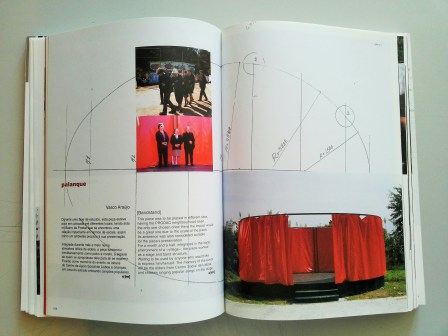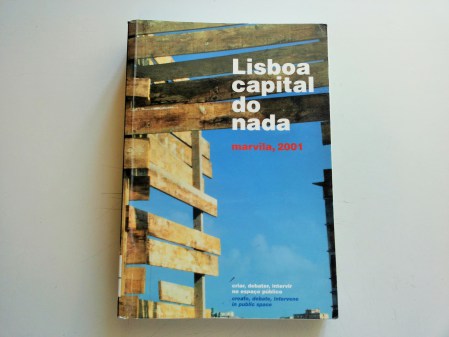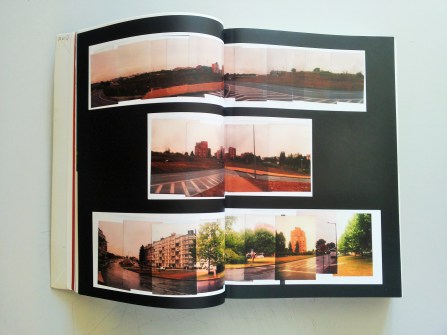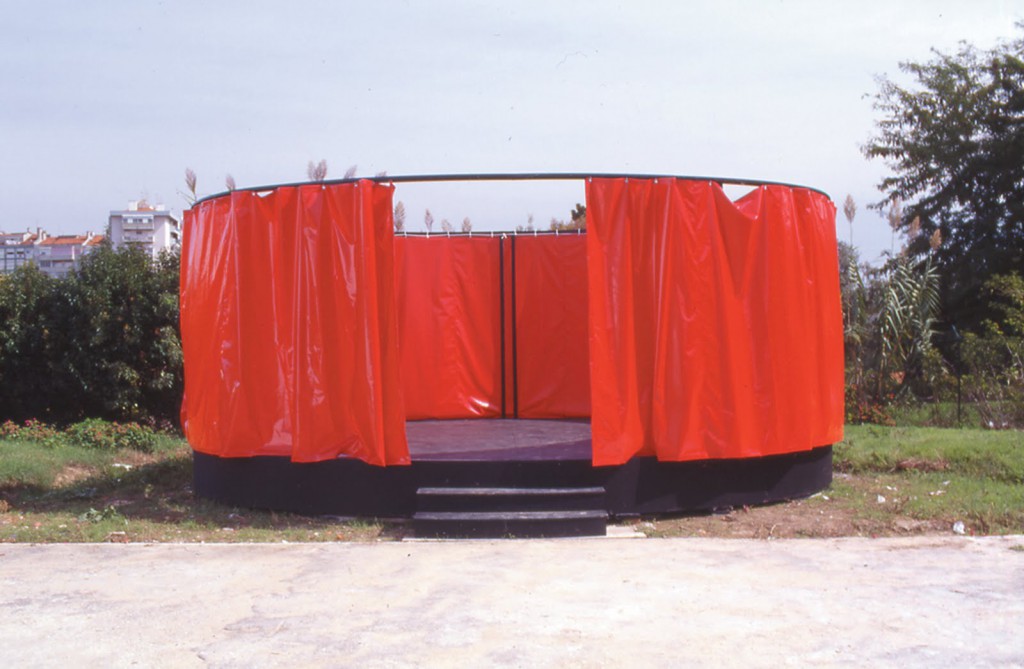Lisboa Capital do Nada – Marvila 2011 / Lisbon Capital of Nothing – Marvila 2001, an event promoted by Associação Extra]muros[ in 2001, established itself as a collaborative platform, leading to a series of experiences which entered into a complex resonance with the place – the city council of Marvila.
A territory situated between the Center [Baixa] and the new centrality of the Parque das Nações, was conceptualized as a Nothing in/of the Capital. Facing a highly contrasting reality, what was at stake was to rethink the urban destiny of a marginalized area and to reveal its vast potential, namely human. Dozens of artists, architects, designers and other professional participated along with the population, through original interpretations of art as service, cunical provocations, the embellishment of spaces and performative actions which voiced the site.
In the framework of a militant generosity and in favor of communicational ambiguity, off projects like LXCN research alternative takes on a democratic conscience in which the performatic contact with the real inscribes aesthetic illuminations that demonstrate how certain things “could be different”, though never giving in to reformist paternalism or gratuitous provocation.
In the words of Daniela Brasil, who was a member of the coordination team (with Teresa Alves, geographer, and Luís Seixas, architect:
In the same year that Porto was announced “Capital of Culture”, we declared Lisbon “Capital of Nothing”. Nothing special. Marvila was, at the time, an area that had the stigma of being “dangerous”, that suffered a certain prejudice for being punctuated by buildings of multicultural- and social-housing; a place that had suffered lots of fractures in its urban/rural fabrics; a place full of incongruities and uncertainties; a place full of potentialities. We were interested in activating those sleeping potentialities as well as inquiring into the relevance of art and culture in society. The event lasted for one month – the whole process for two years. It involved more than 100 activators and participants, among them artists, architects, geographers, designers, sociologists, local administrators and local populations. It aimed to uncover hiding possibilities and to create platforms that foster people’s self esteem. Capital of Nothing raised debate, created contacts, and persisted throughout time with an intangible visibility.
Besides a four thousand people human chain of people ‘giving hands for nothing’, the programme comprised three more structuring projects – Why is there being instead of nothing? by José Maçãs de Carvalho, [e] vazão by Cláudia Taborda and Victor Beiramar Diniz and Azinhagas de Marvila by José Adrião and Pedro Pacheco; as well as an art section – interventions by André Guedes, Catarina Campino, Fernanda Fragateiro, João Pedro Vale, Leonor Antunes, Miguel Palma, Vasco Araújo – and a photography section – Eurico Lino do Vale and Francisco Lino do Vale, Fabrice Picard, João Mariano + Lenia dos Santos and Paulo Muge, José Manuel Rodrigues, Luís Silva, Mariana Viegas, Paula Figueiredo, and Pedro Ruivo.
Many other activities involved the local population in daily activities. From debates in unusual places to fado in public space, from concerts by local musicians to an experimental signage project designed to provoke perplexity, two fundamental values were promoted: participation and community. The participation of cultural theorist Malcolm Miles was another highlight.
Vasco Araújo, Palanque, 2001.
Lisboa Capital do Nada [LXCN], evento promovido pela Associação Extra]muros[ em 2001, constituiu-se como uma plataforma colaborativa, cujo culminar foi um conjunto de experiências que entraram em complexa ressonância com o lugar – a Freguesia de Marvila.
Um território, situado entre o Centro (Baixa) e a nova centralidade que viria a ser a zona do Parque das Nações, foi conceptualizado como um Nada na/da Capital. Perante uma realidade de enormes contrastes, o que esteve em causa foi pensar o destino urbano de uma freguesia marginalizada e revelar o seu vasto potencial, inclusive humano.
Participaram no programa dezenas de artistas, arquitectos, designers, outros profissionais e a própria população, por via de interpretações originais da art as service, de provocações cúnicas, do embelezamento sensível de espaços e de actos performativos que deram voz ao sítio. Projetos off como a LXCN tentam superar constrangimentos formais de campos e disciplinas.
No plano de uma generosidade militante e em favor da indecibilidade comunicacional, investigam registos alternativos para uma consciência democrática em que o contacto performático com o real inscreve iluminações estéticas que demonstram como certas coisas poderiam ser diferentes, sem jamais ceder ao paternalismo reformista ou à provocação gratuita.
Para além de um cordão humano de quatro mil pessoas ‘dando as mãos por nada’, o programa incluiu três outros Projectos Estruturantes – Porque é que existe o ser em vez do nada? de José Maçãs de Carvalho, [e] vazão de Cláudia Taborda e Victor Beiramar Diniz e Azinhagas de Marvila de José Adrião e Pedro Pacheco; bem como uma secção de Arte – obras de André Guedes, Catarina Campino, Fernanda Fragateiro, João Pedro Vale, Leonor Antunes, Miguel Palma, Vasco Araújo – e outra de Fotografia – por Eurico Lino do Vale e Francisco Lino do Vale, Fabrice Picard, João Mariano + Lenia dos Santos e Paulo Muge, José Manuel Rodrigues, Luís Silva, Mariana Viegas, Paula Figueiredo, Pedro Ruivo.
Muitas outras actividades envolveram a população local em actividades diárias. Do debate em locais improváveis ao fado em espaço público, de concertos por músicos locais a um projecto de sinalética vocacionado para gerar perplexidade, participação e comunidade foram dois valores essenciais promovidos. Ponto alto foi a colaboração do teórico cultural Malcolm Miles.
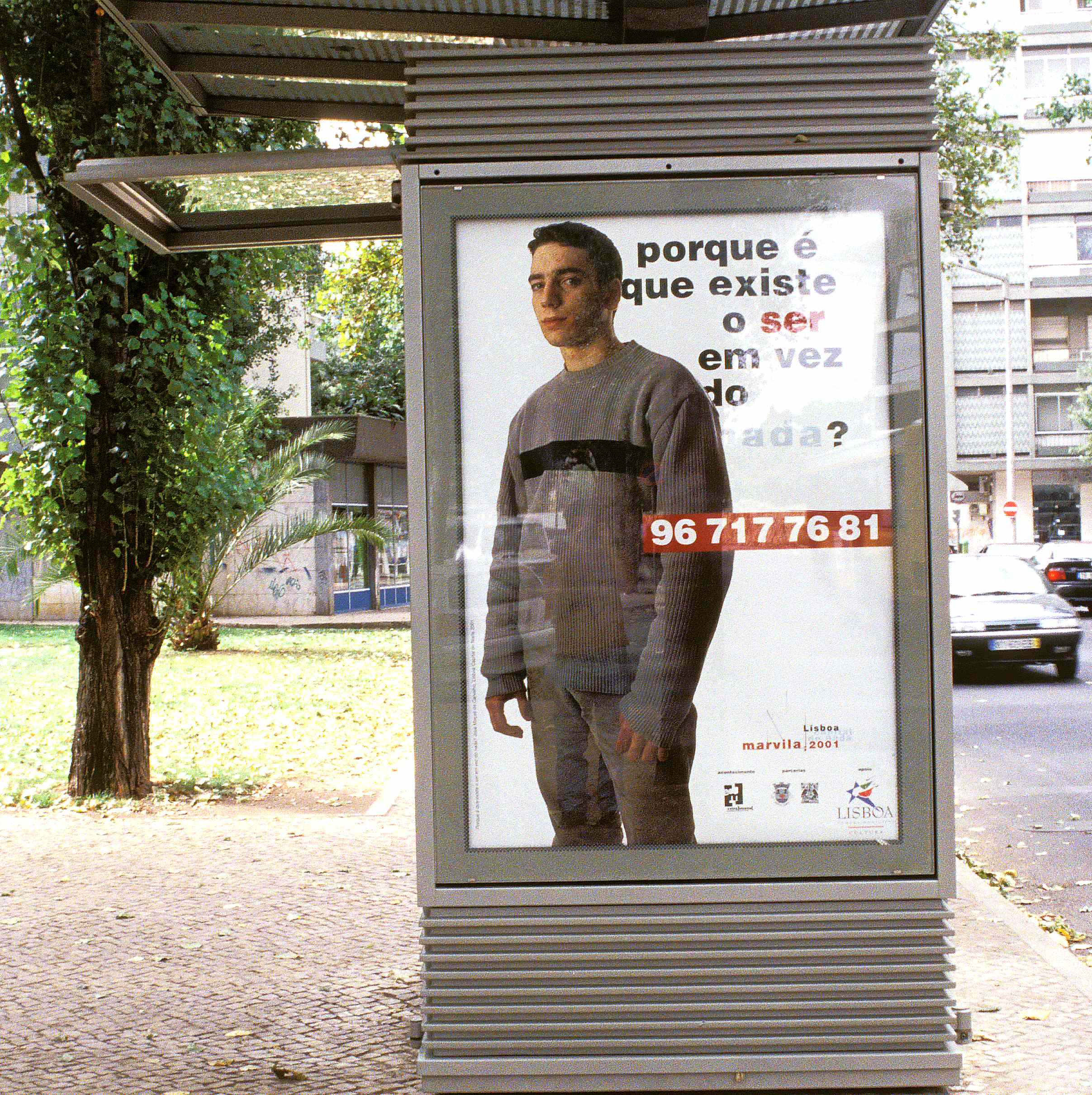 José Maçãs de Carvalho, Porque é que existe o ser em vez do nada? / Why is there being instead of nothing?, 2001.
José Maçãs de Carvalho, Porque é que existe o ser em vez do nada? / Why is there being instead of nothing?, 2001.
Uma entrevista no final do Projecto conta como foi.

